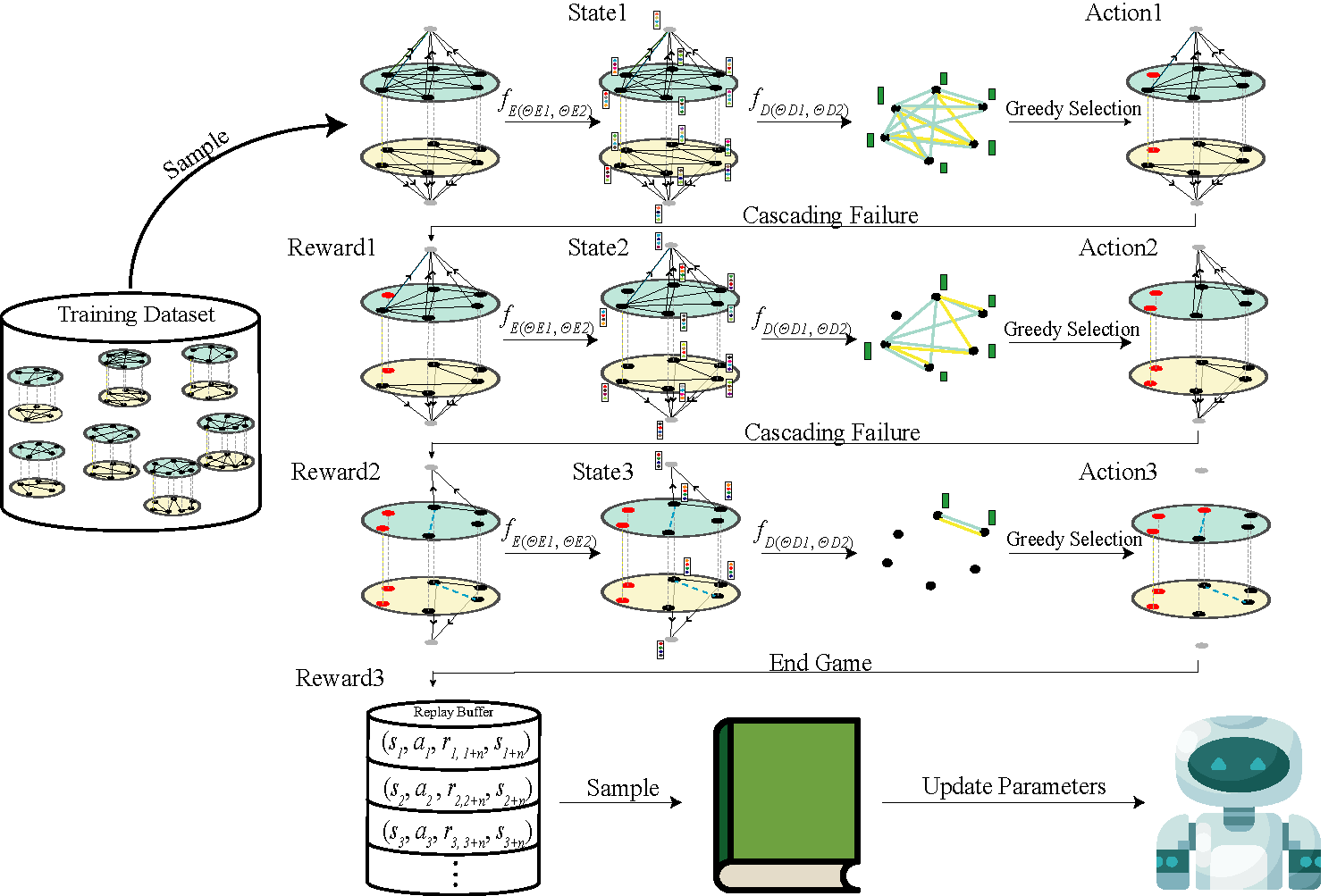Recently, Associate Professor Gu Weiwei from the College of Information Science and Technology, Beijing University of Chemical Technology, published the latest research titled Deep-learning-aided dismantling of interdependent networks in Nature Machine Intelligence (Nat. Mach. Intell.), a top journal in the field of artificial intelligence with a latest impact factor of 25.89 and an annual publication volume of about 100 articles. This research pioneered a key node identification algorithm for multi-layer networks that integrates graph neural networks and deep reinforcement learning, filling the technical gap in the field of intelligent disruption and protection of current complex systems.
The research has Associate Professor Gu Weiwei from the Department of Computer Science as the first author. Yang Chen, a 2024 undergraduate student majoring in Artificial Intelligence at our university, and Professor Filippo Radicchi from Indiana University jointly serve as corresponding authors. Undergraduate students Li Lei and Hou Jinqiang participated in the core research tasks, which demonstrates the outstanding capabilities and potential of students from BUCT in cutting-edge scientific research.
Confronted with practical challenges such as epidemic prevention and control, protection of critical infrastructure, safety of transportation and power grids, and even the transition between network offense and defense in modern warfare, how to quickly identify and dismantle "key nodes" in multi-layer interdependent networks constitutes a core problem in network science. However, traditional algorithms generally rely on centrality heuristic rules, making it difficult to characterize the complex inter-layer coupling relationships. They are plagued by low removal efficiency and weak generalization ability, thus failing to adapt to the dynamically complex structure of real-world networks.
This research proposes a multi-layer network dismantling algorithm named "MultiDismantler", whose overall architecture is shown in Figure 1.
This algorithm integrates, for the first time, the representation learning method of multi-layer networks with the Geometric Multiplex Model and Deep Q-Network (DQN) in an organic manner. Specifically, MultiDismantler effectively encodes the coupling relationships between intra-layer and inter-layer nodes in the network through its representation learning module, and uses a reinforcement learning agent to decode the representation results, thereby learning the optimal dismantling strategy. This method can automatically identify the key nodes that have the greatest impact on the structure of multi-layer networks without the need for manual annotation or supervision signals, thereby achieving an efficient and scalable dismantling process.

Figure 1. Architecture Diagram of Key Node Mining Algorithm for Multi-layer Networks
The experimental evaluation results show that MultiDismantler exhibits superior performance in nine types of real multi-layer networks and tens of thousands of simulated networks, comprehensively outperforming the existing state-of-the-art algorithms (such as EMD, FINDER, etc.), with the dismantling efficiency improved by more than 8%. In key application scenarios such as disease transmission prevention and control, enhanced network robustness and invulnerability design, this algorithm demonstrates extremely strong applicability and promotion potential.
This follows Associate Professor Gu Weiwei's publication of the first paper from the College of Information Science in a Nature sub-journal in 2021, with our university as the first completing unit. Now, she has once again published the first paper of our university in Nature Machine Intelligence with our university as the first completing unit. This demonstrates the continuous leap in research capabilities and academic influence of our university in the field of artificial intelligence.
[Brief Introduction of the Head of the Research Team]
Gu Weiwei, Associate Professor and Master's Supervisor at the College of Information Science and Technology, Beijing University of Chemical Technology.Presided over and participated in the National Natural Science Foundation of China, National Key Research and Development Program, as well as a number of enterprise cooperation projects.In the past five years, she has published more than 20 SCI papers as the first author in journals such as Nat. Mach. Intell., Nat. Commun., Neural Networks, and Social Networks. She has applied for 2 Chinese invention patents (with 2 authorized). She has long been committed to cutting-edge interdisciplinary research in complex network analysis, reinforcement learning, and graph intelligence algorithms.Personal homepage: https://lanyu617.github.io/academic-page-gww/
Yang Chen, 2024 undergraduate student at the College of Information Science and Technology, Beijing University of Chemical Technology, and a research assistant at The Hong Kong Polytechnic University. His research interests include AI for Science and graph neural networks. Email: chenyangmiles@gmail.com
